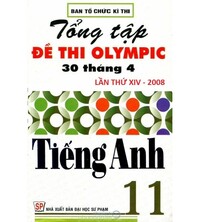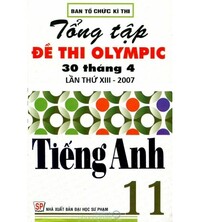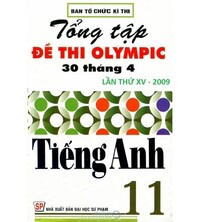5.3. Listening - Unit 5. Heritages site - SBT Tiếng Anh 11 English Discovery
1. Match the words below with the pictures 1-4. 2. Listen to a report on the radio about South Korea's Jeju island. Tick (✔) the places that are mentioned. 3. Listen again. Write A NUMBER in each blank. 4. Listen again. Choose the correct option.
Bài 1
1. Match the words below with the pictures 1-4.
(Nối các từ dưới đây với các hình ảnh 1-4.)
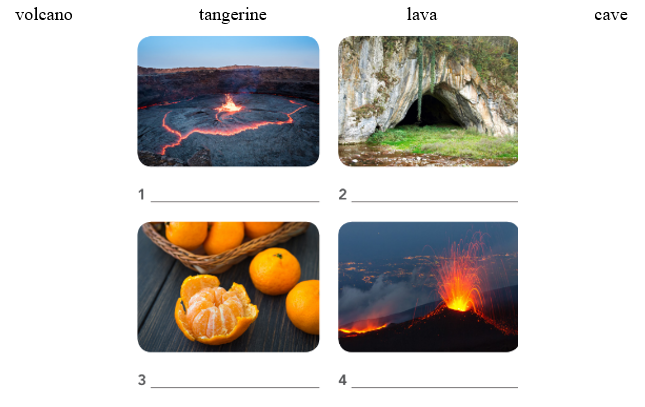
Phương pháp giải:
*Nghĩa của từ vựng
volcano (n): núi lửa
tangerine (n): quả quýt
lava (n): dung nham
cave (n): hang động
Lời giải chi tiết:
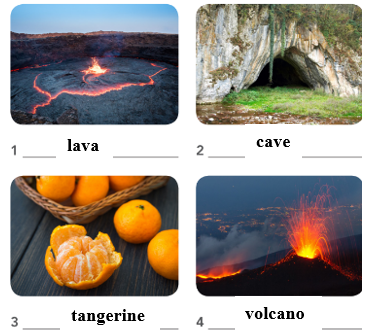
Bài 2
2. Listen to a report on the radio about South Korea's Jeju island. Tick (✔) the places that are mentioned.
(Nghe bản tin trên đài phát thanh về đảo Jeju của Hàn Quốc. Đánh dấu ( ✔) vào những địa điểm được nhắc tới.)
1 Thailand ☐
2 Seoul Province ☐
3 Hallasan mountain ☐
4 Apple garden ☐
5 Geomunoreum lava tube system ☐
6 Foreign countries ☐
Phương pháp giải:
Bài nghe
South Korea's Jeju island
The Jeju Volcanic Island and lava tubes in South Korea was recognized as one of the UNESCO World Heritage Sites in 2007. Jeju is a volcanic island situated 130 kilometers from the southern coast of the Korean Peninsula. With a surface area of 1846 square kilometres, Jeju is the largest island and smallest province in South Korea. A central feature of Jeju is Hallasan, the tallest mountain in South Korea and a dormant volcano, which rises at 1950 meters above sea level. There is one main volcano surrounded by 360 satellite volcanoes. The island is covered in volcanic rock, which is light and porous. Therefore, the locals use the rock to build fences around their houses and tangerine gardens. This island is also famous for its lava tube system, the Geomunoreum. Magma used to flow through these natural tubes. Now they have become empty caves and are considered one of the finest lava tube systems of caves in the world. The caves attract millions of foreign tourists every year. Jeju Island has a variety of animal and plant species. Half of all Korean vascular plants grow naturally on the island, while another 200 Korean species of plants have been transported here. However, half of these species face extinction. One example is the polar plants, which came from the South during a glacial period. Other endangered species are plants in the subtropical forest and lower regions of the island.
Tạm dịch
Đảo Jeju của Hàn Quốc
Đảo núi lửa Jeju và các ống dung nham ở Hàn Quốc được công nhận là một trong những Di sản Thế giới được UNESCO công nhận vào năm 2007. Jeju là một hòn đảo núi lửa nằm cách bờ biển phía nam của Bán đảo Triều Tiên 130 km. Với diện tích bề mặt 1846 km2, Jeju là hòn đảo lớn nhất và tỉnh nhỏ nhất ở Hàn Quốc. Đặc điểm trung tâm của Jeju là Hallasan, ngọn núi cao nhất ở Hàn Quốc và là ngọn núi lửa không hoạt động, cao 1950 mét so với mực nước biển. Có một ngọn núi lửa chính được bao quanh bởi 360 ngọn núi lửa vệ tinh. Hòn đảo được bao phủ bởi đá núi lửa, nhẹ và xốp. Vì vậy, người dân địa phương dùng đá để xây hàng rào xung quanh nhà và vườn quýt. Hòn đảo này còn nổi tiếng với hệ thống ống dung nham Geomunoreum. Dung nham từng chảy qua những ống tự nhiên này. Hiện nay chúng đã trở thành những hang động trống rỗng và được coi là một trong những hệ thống hang động dung nham đẹp nhất thế giới. Các hang động thu hút hàng triệu du khách nước ngoài mỗi năm. Đảo Jeju có nhiều loài động vật và thực vật đa dạng. Một nửa số thực vật có mạch của Hàn Quốc mọc tự nhiên trên đảo, trong khi 200 loài thực vật Hàn Quốc khác đã được vận chuyển đến đây. Tuy nhiên, một nửa số loài này phải đối mặt với nguy cơ tuyệt chủng. Một ví dụ là các loài thực vật ở vùng cực đến từ phương Nam trong thời kỳ băng hà. Các loài có nguy cơ tuyệt chủng khác là thực vật ở rừng cận nhiệt đới và vùng thấp của đảo.
Lời giải chi tiết:
Các địa điểm được nhắc đến trong bài đọc là:
1 Thailand ☐
(nước Thái)
2 Seoul Province ☐
(tỉnh Seoul)
3 Hallasan mountain ☑
(núi Hallasan )
4 Apple garden ☐
(vườn táo)
5 Geomunoreum lava tube system ☑
(Hệ thống ống dung nham Geomunoreum)
6 Foreign countries ☐
(nước ngoài)
Bài 3
3. Listen again. Write A NUMBER in each blank.
(Lắng nghe một lần nữa. Viết MỘT SỐ vào mỗi chỗ trống.)
1 Jeju is a volcanic island, situated ________ kilometers from the southern coast of the Korean Peninsula.
2 With a surface area of ________ square kilometers, Jeju is the largest island and smallest province in South Korea.
3 A central feature of Jeju is Hallasan, the tallest mountain in South Korea and a dormant volcano, which rises ________ meters above sea level.
4 There is one main volcano surrounded by ________ satellite volcanoes.
5 Half of all Korean vascular plants grow naturally on the island while another ________ Korean species of plants have been transported here.
Phương pháp giải:
Bài nghe của bài tập 2
Lời giải chi tiết:

1 Jeju is a volcanic island, situated 130 kilometers from the southern coast of the Korean Peninsula.
(Jeju là một hòn đảo núi lửa, nằm cách bờ biển phía nam bán đảo Triều Tiên 130 km.)
2 With a surface area of 1846 square kilometers, Jeju is the largest island and smallest province in South Korea.
(Với diện tích bề mặt 1846 km2, Jeju là hòn đảo lớn nhất và tỉnh nhỏ nhất ở Hàn Quốc.)
3 A central feature of Jeju is Hallasan, the tallest mountain in South Korea and a dormant volcano, which rises 1950 meters above sea level.
(Đặc điểm trung tâm của Jeju là Hallasan, ngọn núi cao nhất ở Hàn Quốc và là ngọn núi lửa không hoạt động, cao 1950 mét so với mực nước biển.)
4 There is one main volcano surrounded by 360 satellite volcanoes.
(Có một ngọn núi lửa chính được bao quanh bởi 360 ngọn núi lửa vệ tinh.)
5 Half of all Korean vascular plants grow naturally on the island while another 200 Korean species of plants have been transported here.
(Một nửa số thực vật có mạch của Hàn Quốc mọc tự nhiên trên đảo trong khi 200 loài thực vật Hàn Quốc khác đã được vận chuyển đến đây.)
Bài 4
4. Listen again. Choose the correct option.
(Lắng nghe một lần nữa. Chọn phương án đúng.)
1 When was the Jeju Volcanic Island and Lava Tubes in South Korea recognised as one of the UNESCO World Heritage Sites?
A 2005
B 2006
C 2007
D 2008
2 Which statement is TRUE about Jeju island?
A It is the largest province and smallest island in South Korea.
B It is the largest island and smallest province in South Korea.
C It is the smallest island and smallest province in South Korea.
D It is the largest island and largest province in South Korea.
3 What is special about Jeju island's rock?
A light
B heavy
C pink
D soft
4 Why do the locals use the rock?
A to make fences
B to build schools
D to give to tourists
C to sell for money
5 What used to flow through natural tubes?
A water
B salt
C magma
D river
6 Which species faces extinction?
A tiger in forest
B plants in higher regions
C polar plants
D rhino
Phương pháp giải:
Bài nghe của bài tập 2
Lời giải chi tiết:

1. C
When was the Jeju Volcanic Island and Lava Tubes in South Korea recognised as one of the UNESCO World Heritage Sites?
(Đảo núi lửa Jeju và các ống dung nham ở Hàn Quốc được công nhận là một trong những Di sản Thế giới của UNESCO khi nào?)
A 2005
B 2006
C 2007
D 2008
Thông tin: “The Jeju Volcanic Island and lava tubes in South Korea was recognized as one of the UNESCO World Heritage Sites in 2007”
(Đảo núi lửa Jeju và các ống dung nham ở Hàn Quốc được UNESCO công nhận là Di sản Thế giới năm 2007)
=> Chọn C
2. B
Which statement is TRUE about Jeju island?
(Câu nào đúng về đảo Jeju?)
A It is the largest province and smallest island in South Korea.
(Đây là tỉnh lớn nhất và hòn đảo nhỏ nhất ở Hàn Quốc.)
B It is the largest island and smallest province in South Korea.
(Đây là hòn đảo lớn nhất và tỉnh nhỏ nhất ở Hàn Quốc.)
C It is the smallest island and smallest province in South Korea.
(Đây là hòn đảo nhỏ nhất và tỉnh nhỏ nhất ở Hàn Quốc.)
D It is the largest island and largest province in South Korea.
(Đây là hòn đảo lớn nhất và tỉnh lớn nhất ở Hàn Quốc.)
Thông tin: “Jeju is the largest island and smallest province in South Korea.”
(Jeju là hòn đảo lớn nhất và tỉnh nhỏ nhất ở Hàn Quốc.)
=> Chọn B
3. A
What is special about Jeju island's rock?
(Đá của đảo Jeju có gì đặc biệt?)
A light (nhẹ)
B heavy (nặng)
C pink (màu hồng)
D soft (mềm)
Thông tin: “The island is covered in volcanic rock, which is light and porous.”
(Hòn đảo được bao phủ bởi đá núi lửa, nhẹ và xốp.)
=> Chọn A
4. A
Why do the locals use the rock?
(Tại sao người dân địa phương sử dụng đá?)
A to make fences
(làm hàng rào)
B to build schools
(xây trường)
C to sell for money
(bán lấy tiền)
D to give to tourists
(tặng cho khách du lịch)
Thông tin: “the locals use the rock to build fences around their houses and tangerine gardens.”
(người dân địa phương dùng đá để xây hàng rào xung quanh nhà và vườn quýt.)
=> Chọn A
5. C
What used to flow through natural tubes?
(Cái gì đã từng chảy qua các ống tự nhiên?)
A water (nước)
B salt (muối)
C magma (dung nham)
D river (dòng sông)
Thông tin: “Magma used to flow through these natural tubes.”
(Magma từng chảy qua những ống tự nhiên này.)
=> Chọn C
6. C
Which species faces extinction?
(Loài nào có nguy cơ tuyệt chủng?)
A tiger in forest
(hổ trong rừng)
B plants in higher regions
(Thực vật ở vùng cao hơn)
C polar plants
(thực vật vùng cực)
D rhino
(tê giác)
Thông tin: “half of these species face extinction. One example is the polar plants, which came from the South during a glacial period.”
(một nửa số loài này phải đối mặt với nguy cơ tuyệt chủng. Một ví dụ là các loài thực vật ở vùng cực đến từ phương Nam trong thời kỳ băng hà.)
=> Chọn C
Search google: "từ khóa + timdapan.com" Ví dụ: "5.3. Listening - Unit 5. Heritages site - SBT Tiếng Anh 11 English Discovery timdapan.com"

